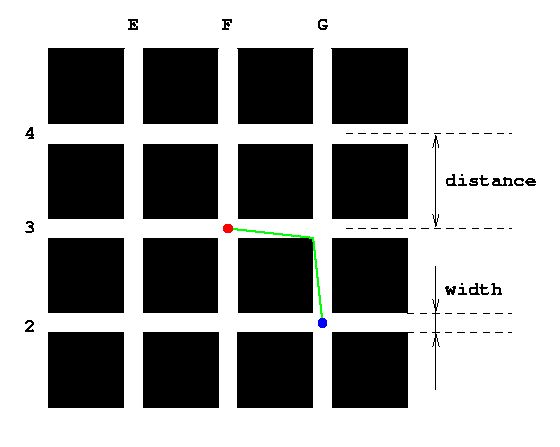We are in a Manhattan-type city with north-south directed
avenues labeled "A" to "Z" and east-west directed streets
numbered 1 to 50. A crossing is represented by the
label of the avenue followed by the label of the street
defining that crossing, with no leading zeros
(e.g., the crossing between avenue "D" and street number 12
is represented as "D12").
The figure below shows part of the city (avenues E to G, streets
2 to 4). The distance between neighboring streets and between
neighboring avenues will be the same for all pairs of neighboring
avenues or streets, and will be given by the input parameter
distance (in meters). This distance is measured from the
center of the streets or avenues, as shown in the figure. Further,
all streets and avenues will have the same width, which will be given
by the input parameter width (also in meters),
as shown in the figure.

Given distance and width as defined above, as well as
the representation of two crossings, start and target
(formatted as described above), return the minimum distance
you have to travel (in meters) beginning from the center of the
crossing start to reach the center of the crossing
target if you are only allowed to travel on streets
and avenues. For example, if start is "F3"
(the red dot in the figure above) and target is "G2"
(the blue dot), the green line shows one possible optimal path to go from start
to target (another optimal path with the same length would be to go first
south to the north-east corner of crossing "F2" and then to the east to
our target).
| 